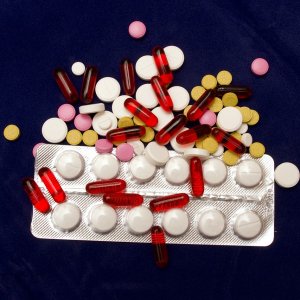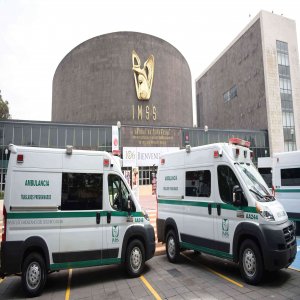
Promising Growth for an Already Large Market
Although the pharmaceutical sector has grown steadily in recent decades, a sector that is now booming is generics. The market for these medications has increased at a nearly exponential rate in Mexico. Over-the-counter and dermocosmetic medicines are also growing at an accelerated pace
The growth of the Mexican generics market has been precipitous. The sale of generics was approved just a bit over 20 years ago due to efforts led by the Ministry of Health to decrease the costs of medical care. In recent years, their growth has significantly accelerated. While in 2013 sale of generics in Mexico amounted to US$3.8 billion, according to Deloitte, the consulting company forecasts sales to nearly double to US$6.8 billion by 2018. This growth is not surprising when considering that these medications are on average 60 percent less expensive than their branded counterparts, according to COFEPRIS.
Behind the almost exponential growth of this market is the expiration of patents, a regulatory support entity and a growing acceptance on the part of Mexican patients. “Since 2010, COFEPRIS has approved 550 generic medicines,” says Julio Sánchez y Tépoz, Federal Commissioner of COFEPRIS. “Our work with generics is one of this administration’s greatest achievements, as these medicines cover 70 percent of Mexico’s main mortality causes and bring about a 60 percent overall reduction in costs. As more generics were introduced, their overall costs went down.”
Now, eight out of 10 medications bought into the country are generics. The OECD states that Mexico has the largest penetration of these medicines, with 84.1 percent of all medications in the country being generics. However, their reduced costs translate to smaller sales margins. While the sale of generics is larger in volume, in costs it represents only 49 percent of the medicine market.
However, the generics segment is only expected to continue growing at a global level and reach US$381 billion by 2021, according to Zion Market Research. It is expected that part of this growth will be a result of the expiration of patents in the coming years. While innovative companies are finding strategies to expand patents, including filing additional patent protection for new routes of administration, new formulations or new uses of a previously known drug, around 26 patents are expected to expire in 2018, according to online news source MedCity News.
Among those set to expire are blockbuster drugs such as Roche’s Rituxan, Amgen’s Neulasta and Pfizer’s Lyrica and while generics or biosimilar versions of these drugs are not expected to be available immediately, it is only a matter of time before there is an alternative in the market. A recent report by Evaluate Pharma states that in 2018 a total of US$39 billion will be at risk due to patent expiration, although the report expects losses will be limited to US$26 billion.
Generics sales are expected to continue growing. Global generic sales are expected to reach US$84 billion in 2018, according to EvaluatePharma, and hit US$114 billion by 2024.


COST-CUTTING THROUGH OTCs
While generics bring significant savings for patients, the Association of Over-the-Counter Manufacturers (AFAMELA) proposes a different cost-cutting initiative: letting individuals manage their care as they see best if only in the cases of simple, common diseases, explains Ricardo Ramírez, Executive Director of AFAMELA.
In early 2018, the association indicated that a total of 15 million Mexicans visited public sector doctors unnecessarily and suggested that promoting the use of OTC medications for ailments that can be easily diagnosed would have saved the public sector a total of MX$43.5 billion.
With about 1,200 different OTC brands, the country has the second-largest market for these products in Latin America. “The OTC market is growing not just in brands, but also in the presentation of different products,” says Ramírez. These products also fill a market niche as they can be bought at convenience stores, such as OXXO, or online.
The OTC market is attractive enough to gain the attention of Big Pharma, which is developing its own lines. “We will launch a few products for our OTC line. We plan to introduce those new medicines into the Mexican market by the second half of 2018,” says Rodrigo Puga, President and Country Manager of Pfizer Mexico.
DERMOCOSMETICS: MORE THAN JUST AESTHETICS
Beauty and dermatological care are not insignificant matters. Valued at US$532.4 billion in 2017, the cosmetics market is expected to be valued at US$805.6 billion by 2023, according to OrbisResearch. It is also expected that this market growth will be driven by an aging population concerned about the prevention of skin damage, age spots and wrinkles. In Mexico, 79.2 percent of the population uses some type of cosmetic product, according to CANIPEC. Between 2016 and 2017 the personal care industry grew by 7 percent, says Carlos Berzunza, Director General of CANIPEC.
However, the Mexican cosmetics and skin care markets are still behind others in the region. “Mexico has a mature cosmetics market that continues growing but is still behind Brazil, Argentina and Chile in use per capita. We want the Mexican consumer to shift toward the use of cosmetics at a health, preventive treatment and dermatological level,” says Miguel Ángel Marín, CEO of Industrias Sintoquim.
Cosmetics can provide much more than an aesthetic effect since modern cosmetics incorporate products that can treat skin ailments and even help prevent diseases such as cancer due to sun exposure, especially if these products are used in line with guidance from professionals.
A great deal still needs to be done to increase the penetration of dermocosmetics in the country. A major challenge is the current lack of dermatologists. “In Mexico, dermatology has a lower market penetration and is not part of the public institutes’ basic lists. The country needs more dermatologists; now, Mexico graduates about 40 dermatologists per year and the country has approximately 3,000 in total,” says Corrado de Gennaro, General Manager for Mexico and North Cone Latam for Galderma.
















